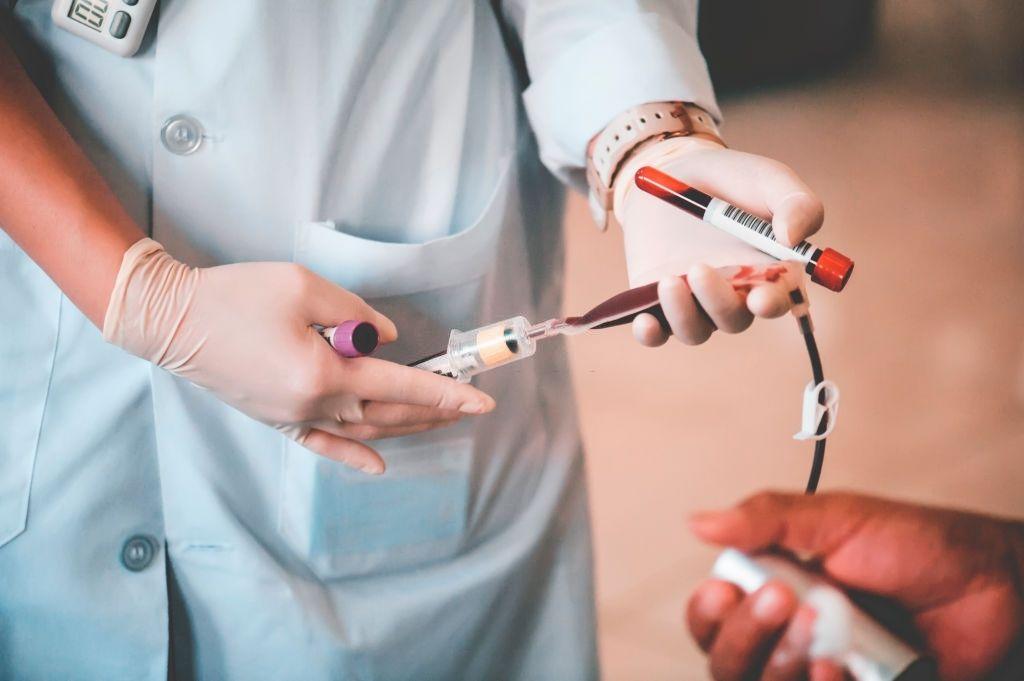Draw Blood-
- Various techniques for phlebotomy employed for drawing blood are:
- Arterial blood sampling-
When blood is drawn from an artery.
2. Capillary method-
- The sample is collected from the finger, heel or rarely the earlobe
- There is a low risk of any injury
3. Venipuncture-
- The most widely used technique for phlebotomy.
- The blood is drawn from a vein.
- This process aids in blood transfusions.
- It also aids in administering medication through the intravenous route.
For understanding the procedure in detail please read our article on “What is venipuncture? Why is it important for phlebotomists?“
4. Fill up sample tubes-
- Keep multiple tubes of blood samples in a rack
- Invert the tubes containing additives the number of times as mentioned
5. Complete procedure-
- Clean all the contaminated surfaces
- Discard the used needle into a puncture-resistant container
- Inform the patient once the procedure is over
6. Prepare for transportation of samples-
- Pack samples to be transported in a plastic leak-proof bag
- All samples should display legible labelling
The samples thus drawn are not always for diagnostic purposes. In some medical conditions like hemochromatosis and erythrocytosis, they are a part of the treatment given.
Also Read: BSc Nursing Course
Therapeutic Phlebotomy
The techniques for phlebotomy are applied in the treatment of a few medical conditions too. This is when we call it therapeutic phlebotomy. These are explained for better understanding.
Hemochromatosis: Why and how of application of phlebotomy in this condition?
In conditions when the body has an iron overload, more than the regular quantity of blood is drawn. As compared to 2.5 to a maximum of 10 ml in regular testing, around 470 ml of blood is drawn in this condition. It is drawn from the veins once every one to two weeks.
- The drawn blood may or may not be replaced by blood products or intravenous fluids.
- This eliminates around 250 mg of iron from the body in one draw.
- This improves the functioning of the heart and liver, provides relief from joint pains and leads to a reduced risk of liver cirrhosis.

